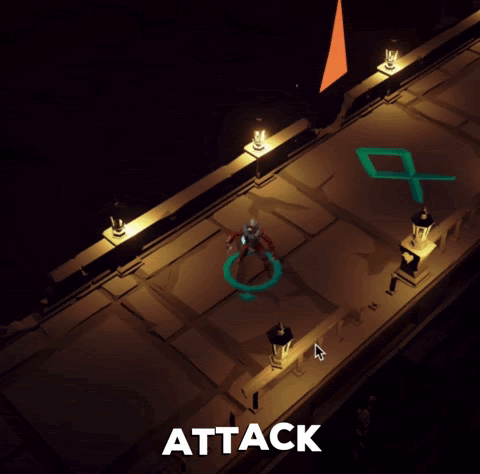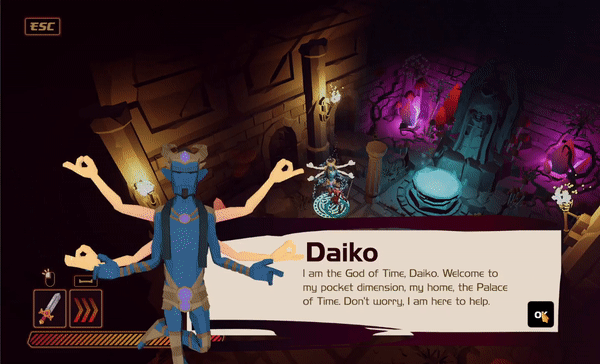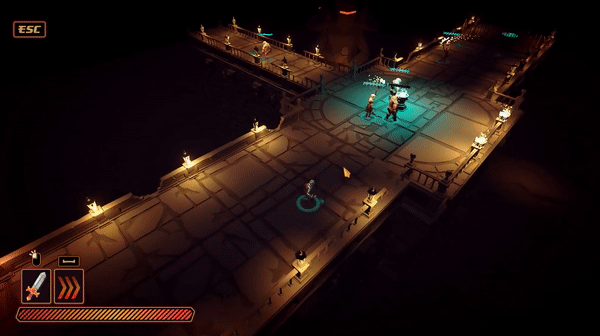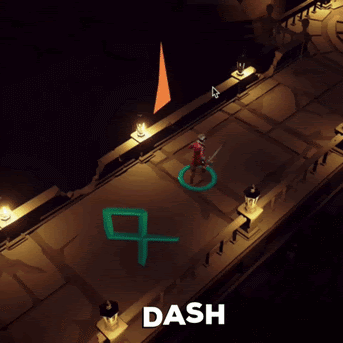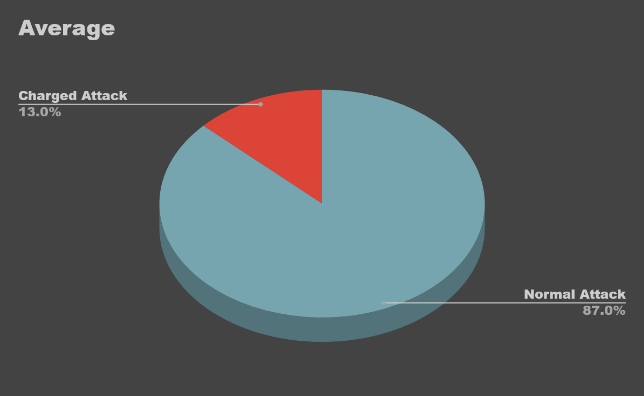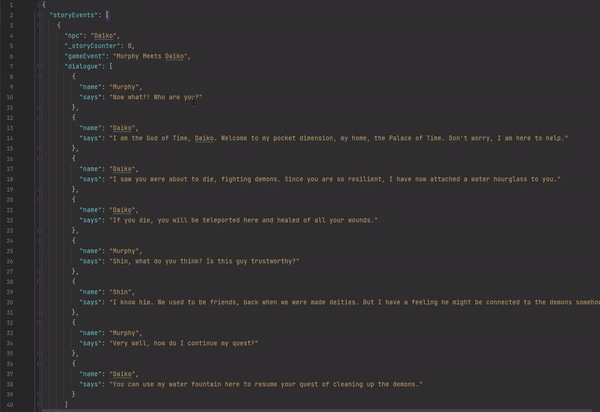Chrono Cut
Background
Chrono Cut is an action-packed 3D top-down rogue-lite/dungeon crawler game where players control Murphy, a physicist fighting demons with the aid of deities to save the world from a demon invasion. The game's narrative is driven by encounters, and the player's actions will have a direct impact on the outcome of the story. The game also features hack-and-slash combat, and complex enemy AI behavior. This adds a layer of strategy to the combat, that the players will have to adapt to in every enemy encounter.
This was developed by a duo team where the game aims to challenge and test our skills as game developers while delivering a compelling narrative, exciting combat, and challenging mechanics to make an engaging experience for the players as part of the USC Games Program course.
My Role
Lead Engineer. I focused on implementing different game mechanics like movement, combat, and UI from a top-down camera view perspective for the game.
Tools
Unity, C#, Mixamo, Perforce
Timeline
5 months,
Released on Itch in Summer 2022
Concept Inspiration
Once we had our traversal system in place, we moved on to combat, adding two types of attacks: a slash attack and a charge attack. Since we didn't have the resources to hand-animate 3D models, we decided to import animations from Mixamo, which proved to be a great asset in polishing our game.
Finally, we had to create a dialogue system to provide a fun and engaging story. Since Chrono Cut is a rogue-lite game, we had to create a JSON file that would track the player's progress and update the dialogue accordingly. Overall, it was a challenging but rewarding experience developing Chrono Cut, and we're excited to share it with the world.
Development Process
I started working on Chrono Cut in the Spring semester at USC, with the goal of releasing the game in the Summer of 2022. My partner and I were both playing Hades at the time, and we drew heavy inspiration from it during the pre-production phase of our game.
As a small team, we didn't want to overcomplicate the development process with difficult-to-implement mechanics. So, we started by creating top-down replicas that included basic movement and dashing.
Elements of my work
Enemy AI Behaviour
As we began working on the top-down camera prototype for our game, we quickly realized that we needed to consider the different ways that players could traverse the game world using a mouse and keyboard. This led us to explore a variety of different options, including Navmesh agents.
Applying Navmesh agents to the player model allowed us to calculate the player's desired position and determine whether it was a viable position on the Navmesh. This was crucial to ensure that players could smoothly navigate through the game world without running into obstacles or getting stuck in awkward positions.
Traversal System
I designed advanced enemy AI behavior that seamlessly integrates with the gameplay of our game. We meticulously crafted set patrol positions for the enemies, providing an immersive experience that challenges and engages players. We also ensured that the enemy states were easily identifiable with a visual UI circle, allowing players to focus on combat without distraction.
Dialogue System
As a game developer, I knew that engaging NPCs were integral to the game's narrative. We created perky and fun characters with unique personalities that players could engage with. With the dialogue system, players could discover more about the game's lore and world. Our goal was to make the game's narrative as exciting and engaging as the gameplay itself.
Overcoming Challenges
Data-Driven Programming
This project required us to do weekly playtests among other students and host playtests among other friends-family. Therefore, we had to create event-based systems that would trigger based on player action. We would track the percent difference between what types of attacks the player was doing and which levels they would die in. This way we were able to balance our game and reduce play-time to around 30 minutes which was our target play-time to finish the game.
Writing narrative is not as easy at seems
This project required me to write my own narrative for the first time since it is required from a rogue-lite game. Not only did we have to storyboard the end of each run, but we also had to create a JSON file that would have all the dialogues to progress the story. We used Player Prefs to update which part of the story the player was at and read the dictionary according to the Player Prefs.
Takeaways
Scoping can be a problem
Originally, the game had a much larger scope but due to time constraints, we realized we had to follow a certain deadline. We wanted to implement our own boss fights and create different types of enemy weapons that the player can equip to fight enemies. However, this required us very unique animations and we didn’t have the expertise to keyframe our own animations.
Creating a compelling story
Even though the game has fun dialogue, a good story needs to be storyboarded during pre-production so that we can place systems during production to communicate the story to the audience.
Lifetime of a game being developed
We learned the 4 main phases of the game: ideation, pre-production, production, and post-production. We followed these 4 phases as closely as we possibly could during the development process by creating habits for each phase and found ourselves to be quite happy with the product by following this timeline.

